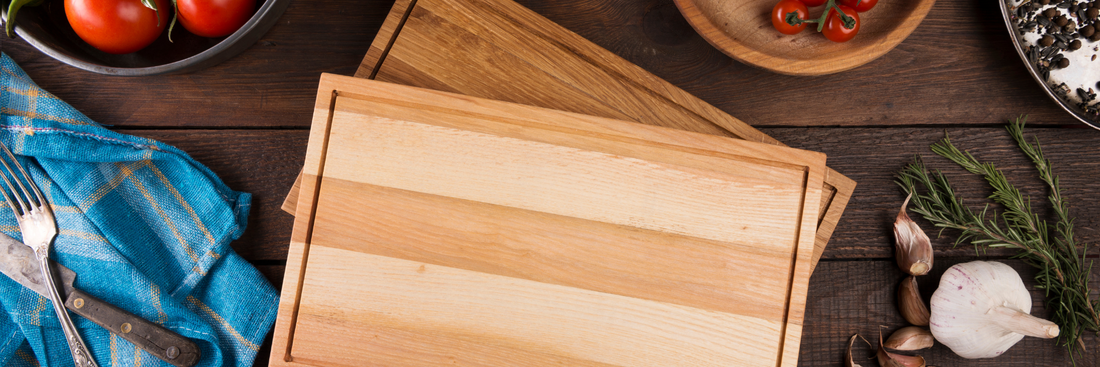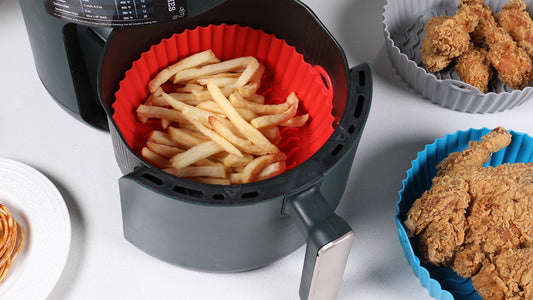In the era of conscious living and eco-friendly kitchens, the cutting board you choose can say a lot about your values. At Kimecopak, we believe sustainability begins at the core of your kitchen tools starting with what you chop your vegetables on.
Why make the switch to a sustainable cutting board? Because it’s not just a board it's a statement of environmental responsibility, durability, and health-conscious living. Whether you're a home chef or a professional, the right eco-friendly board can elevate your cooking experience while protecting the planet.
In this guide, we explore the best eco-friendly cutting board materials, their benefits, and how to maintain them for long-term, zero-waste use.
-
The Ultimate Guide to Choosing a Non-Toxic Cutting Board
-
Pros and Cons of Using a Composite Cutting Board
Materials & Types of Sustainable Cutting Boards

Organic Wood Cutting Boards
Made from hardwoods like maple, walnut, and birch, these boards are known for being gentle on knives and naturally antimicrobial. When sourced from FSC-certified forests, wooden boards can last over a decade with proper care. They also develop a beautiful patina over time, adding character to your kitchen.
Bamboo Cutting Boards
Fast-growing and renewable, bamboo is technically a grass but tougher than many woods. Lightweight and water-resistant, bamboo boards are a popular choice for eco-conscious buyers. However, they may dull knives quicker. Look for FSC or USDA Biobased certifications to ensure ethical sourcing and safe adhesives.
Recycled Plastic Cutting Boards
Brands like reBoard by Material craft boards using 75% post-consumer plastic and 25% renewable sugarcane. These boards are durable, dishwasher-safe, and help reduce overall plastic waste, especially microplastics that can transfer into food from low-quality plastic boards.
Non-Toxic & Compostable Boards
Innovative options like Epicurean’s paper composite boards, MK Free Board’s biopolymer designs, and clay mineral-based alternatives offer cutting boards that are both non-toxic and biodegradable. These boards are low maintenance and often dishwasher-safe.
Sustainable Teak Cutting Boards
Teak is naturally moisture-resistant and pest-repellent. When sourced responsibly (e.g., FSC-certified teak from Proteak or Betterwood), teak boards offer luxury and longevity in one, especially useful for humid kitchens.
Why a Sustainable Cutting Board Is a Smart Choice

Switching to a sustainable cutting board offers both environmental and personal benefits:
- Reduces plastic waste and limits microplastic exposure in your food
- Non-toxic materials ensure food safety, especially with high moisture use
- Long-lasting durability means less frequent replacements and lower lifetime costs
- Quieter and gentler on knives, preserving your blades over time
- Versatile use: Perfect for prep, serving, or even as a rustic charcuterie board
Choosing a green cutting board is not just about performance, it’s a lifestyle upgrade.
How to Choose the Right Eco-Friendly Board

Key Certifications to Look For
Look for credible labels like:
- FSC (Forest Stewardship Council)
- USDA Biobased
- LFGB (German food safety standard)
- NSF (National Sanitation Foundation)
These ensure your board is sustainably sourced, food-safe, and durable.
Choose Based on Knife Type & Usage
- Use softer woods (like walnut) to protect fine knife edges.
- Bamboo resists water well but is firmer.
- Composite or recycled plastic = dishwasher-friendly
- Wood or bamboo = handwash + regular oiling
Recommended Sustainable Brands
- Bambu: Certified bamboo boards with minimal adhesives
- Epicurean: Dishwasher-safe composite boards
- Material (reBoard): Colorful, recycled plastic boards
- MK Free Board: Biodegradable biopolymer options
- ChopValue: Upcycled bamboo chopsticks
- Proteak/Betterwood: Premium FSC teak boards
How to Clean & Preserve Your Cutting Board
To extend your board’s life:
- Handwash only with mild soap and warm water
- Do not soak – moisture warps wood
- Air dry immediately after cleaning
- Natural deodorizing: scrub with lemon + salt, or use vinegar/baking soda paste
- Oil your board every 1–3 months:
-
-
Use food-safe mineral oil, beeswax, coconut oil, or walnut oil
-
- Avoid vegetable oils, which can turn rancid over time.
End-of-Life Sustainability & Zero-Waste

When your board reaches the end of its life:
- Wood and bamboo boards can be composted, burned (in clean-energy systems), or repurposed
- Composite boards like Epicurean’s are partially biodegradable
- Recycled plastic boards can often be returned to a closed-loop system, like ChopValue, for reprocessing
Your cutting board doesn't have to end up in a landfill.
Conclusion
Sustainable cutting boards are more than just a kitchen trend they’re a tangible way to reduce waste, care for your health, and support ethical brands. Whether you’re drawn to the timeless charm of FSC wood or the innovation of bioplastic designs, there’s an eco-friendly board that fits your lifestyle.



